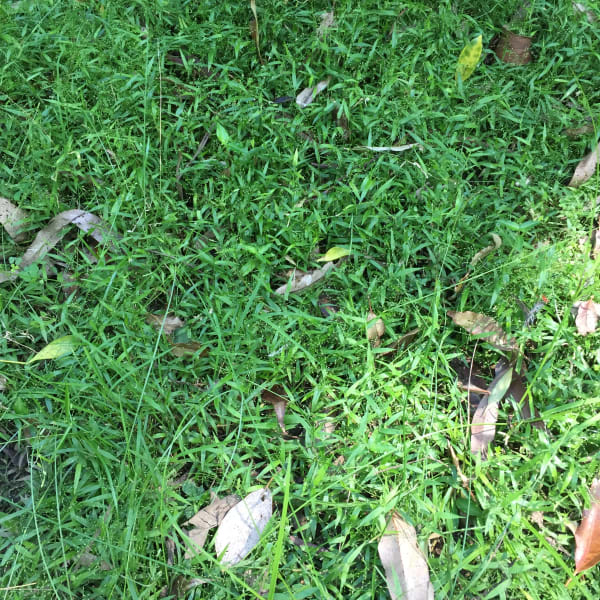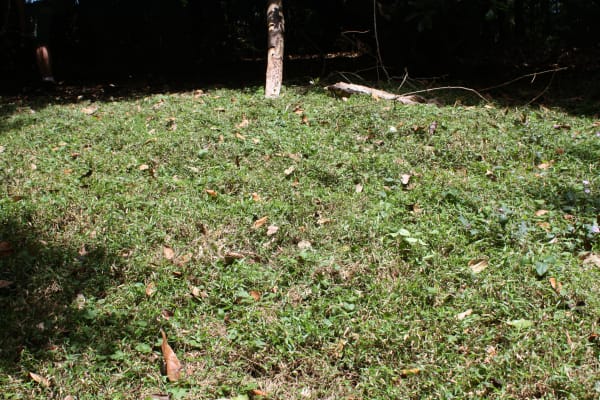Lawns are a huge part of urban life, and there's a wealth of resources, advice and products available to create and maintain lawn. But lawns aren't great for local biodiversity, particularly when they're treated with chemicals to maintain them as a single-species monoculture.
Many commonly grown lawn grasses are not native to Australia. Without wanting to take on Big Lawn, I freely admit my affinities are not only for prioritising local native species, but also taking other steps to make gardens, parks and other urban spaces as supportive of pollinators as possible. That means species diversity, growing local and a bit of wildness (aka messiness).

One area where there's a local native grass in a class of its own, and that's shade-tolerance. We are lucky to have in this area one of the prettiest grasses going: Pygmy Panic (or Panicum pygmaeum in botanical terms).
This low-growing perennial has a very distinctive look, with leaves at right angles to the stems, and the most gorgeous little seed heads, also more or less at right angles. Particularly when it's in seed, it's the sort of grass that has me cooing and burbling with joy, particularly as it's not common around the place.
In natural terms, it can be found in rainforest and also eucalypt forests, often kept low by the browsing of native fauna. I came across what looked for all the world like a 'lawn' of Pygmy Panic in rainforest on Saddleback Mountain, which my knowledgeable bushwalking buddies explained was thanks to the local swamp wallabies.

In a garden setting, Pygmy Panic may need periodic mowing or whipper-snippering, but I've found that in full shade it grows slowly and stays very low.
It is nothing like as hard-wearing as the toughest conventional lawn grasses, but it is fine with some foot traffic and combines wonderfully with other local native ground covers like Kidney Weed (Dichondra repens), Native Violet (Viola hederacea), Pennywort (Hydrocotyle species) and Gotu Kola (Centella asiatica).
Growing different species together not only adds instant biodiversity, it also creates a more resilient ground covering that adapts and responds to changes in rainfall and soil moisture.
Emma Rooksby is the coordinator of the Growing Illawarra Natives website





